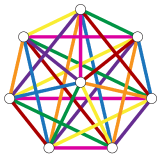2.2: Chemical Representations on Computer: Part II
- Page ID
- 83689
 |
UALR 4399/5399: ChemInformatics |
 |
Learning Objectives
- Understand the principles behind connection table representation of chemical structures
- Translate structural formulas into simplified connection tables and vice-versa
- Recognize the parts of a MOL file, a common connection table file format
- Map the correspondence between features of a structural formula and entries in a MOL file
- Adjust connection tables to make simple modifications to chemical structures
- Track how changes in a chemical sketch program and the underlying connection table data relate to each other.
Like structural formulas, connection tables represent the basic building blocks of structural organic chemistry: atoms and bonds. They encode information and rules about chemical structures in the form of a table that a computer algorithm can parse. A program can then use this information in many ways, to present a visual image to a user, to compare structural features among many compounds and associated data, to provide a link between chemical records in different databases, and much more. Connection tables enable chemical structure information to be programmatically accessible and are the key to most cheminformatics applications.


